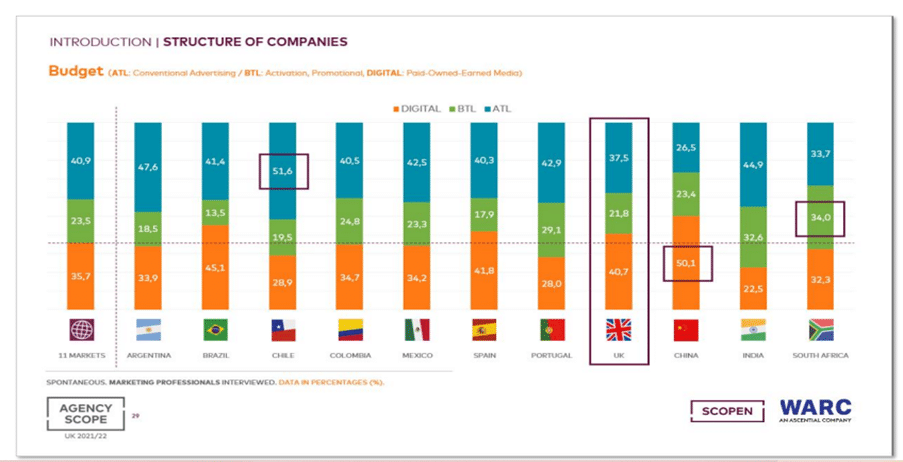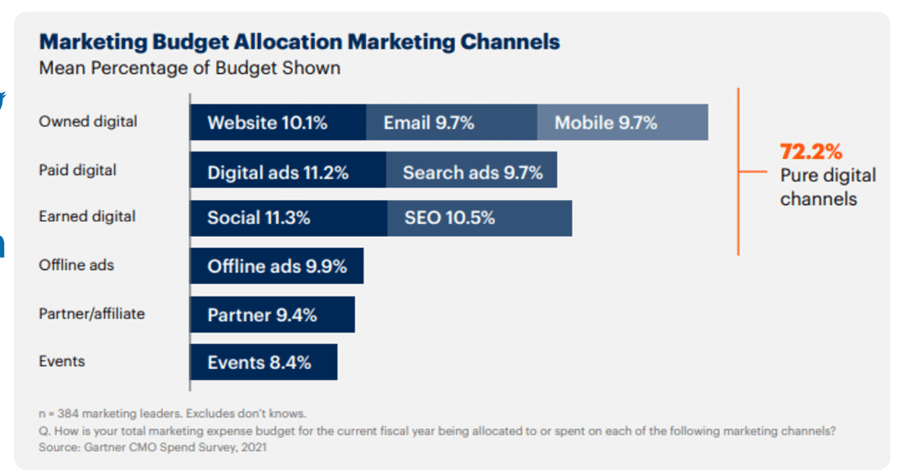One question we get asked most often as an agency, especially by small and business owners is “How do we determine a digital marketing budget?”
This can be tough to determine especially for SMEs as they believe they are not big enough to be able to “afford” or “justify” the spending.
If you’re new to digital marketing, you may be intimidated by the idea of planning for and running digital marketing campaigns. Without a budget in place, the biggest mistake you will be making is just throwing money at digital as and when required rather than planning for it.
The good news is that determining your digital marketing budget isn’t rocket science!
Our tips in this guide will help you learn how to plan your digital marketing budget in 5 simple steps.
Contents
Step 1 – Determine Your Business Goals
Before you begin formulating a digital marketing budget, you must set up appropriate goals for your business.
To set appropriate goals, they must be SMART – SPECIFIC, MEASURABLE, ACHIEVABLE, RELEVANT, and TIME-BOUND.
You may have a specific goal in one of these three categories:
– Increasing awareness of your brand through metrics like brand name-search, ad impressions, and social engagement.
– Generating leads in the form of signing up for trial subscriptions, opting into email newsletters, downloading educational materials, etc.
– Sales metrics like total revenue, average revenue per customer, and cost per acquisition for a customer.
Determining your goals is critical to your digital marketing strategy. Without the goals, it will be difficult to measure success and also determine what channels would help achieve the business objectives.
Step 2 – Understanding Your Revenue and Cost Metrics
Below are the two metrics to evaluate when considering a digital marketing budget
Cost Of Advertising – For example, what would be the cost of Google Ads to get one click? For reference, an average cost per click (CPC) would give you a rough idea of the budget you need to acquire x number of customers. A higher CPC would indicate that advertisers need to spend more to get the same number of customers than if they have a lower CPC.
Customer Acquisition Cost (CPA) – What is the cost of each acquisition to you that earns you a return on investment (ROI)? Depending on your average revenue per customer, you can evaluate whether your CPA for each channel is leading you to a point of profitability. Based on this, you will need to adjust your budgets accordingly.
Step 3 – Analyse Industry Spending
Looking at industry spending is another place where you can get some estimates to plan your own digital marketing budgets.
As per the latest industry reports,
“UK digital investment has increased by more than 18% since 2015 and is higher than the majority of the other markets where the Agency Scope is conducted. Aside from digital, 37.5% of UK marketing budgets are invested in above-the-line and 21.8% in below-the-line.”
In terms of channels, some reports show the following split.
Step 4 – Determine Your Digital Marketing Strategy
When you set your marketing strategy based on your business goals, you are better able to gauge your success. Each goal may call for a different strategy. The tactics will vary, but the channels will revolve around paid search, organic search, content marketing, social media, email, video, and mobile apps.
Even if something has worked well for you in the past, it does not mean it will continue to do so. The world was dealt an important lesson from the recent pandemic about the need to be agile and flexible with our marketing budgets. Brick and mortar businesses were forced to realize that digital channels can no longer be ignored.
Having analysed past industry trends and your company’s particular business goals can give you a starting point when it comes to analysing where to allocate your marketing efforts. However, while we look at what has happened in the past, it is important to also have a vision for the future.
Your digital marketing strategy should focus on the following
- What has worked well in the past
- What should be your current focus
- Upcoming trends and innovations
Based on your business goals, what has worked for you in the past, your revenue and cost metrics and taking into consideration where the industry is headed and what are your competitor spends and what is your outlook, you are in a fairly good place to start determining your digital marketing budgets.
Step 5- Measure and Optimise
At the end of the day, your advertising budget comes down to what you can afford. What we are recommending may not be doable, depending on where your business is in its life cycle. Accept the reality of your budget and have reasonable expectations for your marketing budget. It can be revised. Depending on the outcomes, you can adjust how much money you allocate to different channels, or you can change your overall budget. This would be possible only if you’re keeping track of the results. It is critical to test things, but equally important to measure those things too. Without knowing the results, your strategies have no real meaning. As you keep a close eye on performance, it may be necessary to reassign money from one area to another, so make sure to revisit your budget often.








